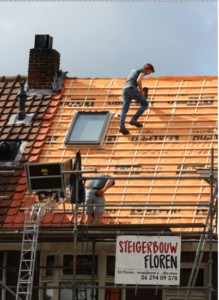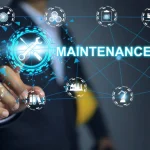A sturdy, well-maintained roof is critical to the integrity of your home. It protects you from the elements and contributes to your property’s overall value. Yet, many homeowners overlook the importance of timely roof repairs. This guide aims to shed light on common roof issues, effective maintenance measures, and when to call in a professional for assistance.
Understanding Common Roof Problems
Various issues can compromise your roof’s integrity. Among the most frequent problems are leaks, missing shingles, and sagging sections. Recognizing these red flags is the first step toward safeguarding your home. Residential roofs often endure wear and tear due to weather extremes, leading to leaks. An undetected leak might cause damage deep within the walls, resulting in mold and mildew. It’s vital to inspect the roof regularly for any signs of water stains or damp patches within your living space. Similarly, missing or damaged shingles can leave your roof exposed to further deterioration and should be addressed immediately. Sagging areas can indicate significant structural problems, often resulting from prolonged moisture exposure. If you spot any sagging in your roof, it warrants immediate inspection by a trained professional.
Seasonal Roof Maintenance Tips
Preventive measures can help prolong the lifespan of your roof. Seasonal maintenance is essential in preparing your roof to withstand different weather conditions. Throughout fall, homeowners should clear leaves and debris from gutters to avoid blockages. Ice build-up during the winter months can damage the roof structure, so ensuring proper drainage is crucial. As spring approaches, conduct a detailed inspection of your roof. Check for loose shingles and seasonal damage from winter storms. Addressing minor issues promptly can prevent larger, costlier repairs down the road. Summer is an excellent time to clean the roof and inspect for sun damage, which can deteriorate roofing materials over time. Regular inspections throughout the year will not only maintain curb appeal but will also extend the life of your roof significantly, keeping you safe from moisture and heat damage.
When to Replace Your Roof
Over time, all roofs reach the end of their lifespan. Knowing when it’s time for a replacement versus making repairs is crucial. Various signs indicate that a roof has outlived its usefulness, including widespread shingle damage, persistent leaks, and visible sagging. Homeowners should consider the roofing material’s warranty, as most shingles last between 20 to 30 years. If your roof has reached or exceeded this timeframe, consulting a professional might help determine if repairs are plausible or if a complete replacement is necessary. This is especially prevalent with models like asphalt shingles, which have a limited lifespan compared to materials like metal or slate. If you’ve recently encountered significant damage due to a storm, timely consultation with a reputable roofing company can prove invaluable in restoring your home’s safety and aesthetics.
DIY Repairs
Some roof repairs are manageable without professional help. Replacing a few missing shingles or sealing small leaks can often be done by savvy homeowners. It’s essential, however, to approach these tasks with caution to avoid further damage or personal injury. Before attempting any DIY repairs, assess your comfort level with heights and whether you have the needed tools. Basic tools for minor repairs include a pry bar, hammer, and roofing nails. Ensure you wear appropriate safety gear, including a sturdy ladder, to access your roof safely. For homeowners lacking the confidence or expertise to take on repairs, turning to professionals is a wise choice. They possess the necessary skills to detect underlying issues that may not be immediately visible.
Finding the Right Roofing Contractor
Choosing a qualified roofing contractor is critical to ensuring any repairs or replacements are done correctly. Recommendations from friends and family are often reliable. Online reviews also provide insights into a contractor’s reputation and quality of work. Always verify licenses, insurance coverage, and warranties before engagement. Once you have a shortlist of potential contractors for roof upgrades, invite them for assessments and quotes. Comparing different bids can give you insight into local market rates, helping you make an informed decision. Ensure the contractor outlines the scope of work, timelines, and payment structures in a clear contract to avoid any future misunderstandings.

Preventing Future Roof Damage
Once repairs or replacements are complete, taking proactive steps to prevent future damage is crucial. Regular maintenance can drastically reduce repair costs over the long run. Install gutter guards to minimize debris accumulation in your gutters, and keep nearby trees trimmed to prevent branches from damaging your roof. Consider regular inspections every year or after severe weather. By remaining vigilant about your roof’s condition, you can catch issues early and address them before they become troublesome. Collaboration with reputable service providers can help you navigate any necessary updates while maintaining the structural longevity of your home.
Proactive roof maintenance and timely repairs are paramount in preserving your home’s safety and integrity. Ignoring minor issues often leads to larger, costlier problems that could have easily been avoided. Regular inspections, immediate repairs, and informed decisions regarding roof upgrades can maintain your home’s value while ensuring peace of mind. Investing time and resources into your roof not only enhances your property value but also secures your living environment. A safe and functional roof reflects the care you extend to your home and family.







